Species by Order: Scyphozoa: Semaeostomeae
| Natural History | ||
|---|---|---|
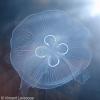 |
Aurelia spp. |
Blooms in most years, generally during late winter and spring (February through May). Sting is generally not painful. Polyp stage commonly found as part of benthic fouling communities. Females brood larvae on oral arms. |
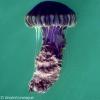 |
Chrysaora achlyos |
Common name is the black sea nettle. Blooms occur periodically, generally in the summer (June to September). There is some suggestion that the appearance of blooms may be associated with environmental disturbances such as El Nino and red tides. Only recently described (1997), it was the largest invertebrate to be described in the 20th century. |
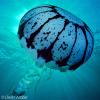 |
Chrysaora colorata |
Common name is the purple striped jellyfish. They have a strong sting. They are often infested with juvenile crabs. They can be seen year round in the San Diego area, but do not generally form large surface blooms. |
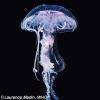 |
Pelagia noctiluca |
Common name is the mauve stinger. Has a painful sting. Known to form large blooms. Caused massive damage to penned salmon at a fish farm in Ireland in 2007. Has no benthic polyp stage. Rarely seen in southern California. |
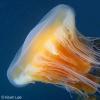 |
Phacellophora camtschatica |
Commonly called the fried egg jellyfish or the egg yolk jellyfish. Has a mild sting. Generally hangs motionless in the water with their tentacles trailing behind. Often infested with amphipods or juvenile crabs. |
